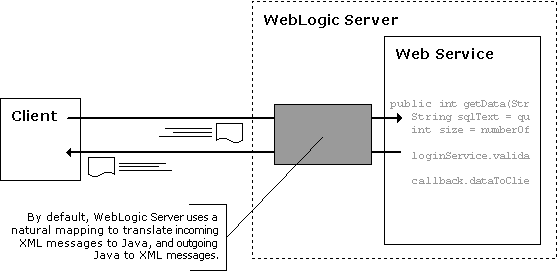Web services you build with WebLogic Workshop communicate by sending and receiving XML messages. By default, WebLogic Server translates these messages to and from the types in your Java declaration according to a "natural" map—a format in which the parts of your Java declaration match the contents of the message.

In some cases, however, you may want to enable your service to receive or send messages that don't match—perhaps because you want your service to work well with a client or resource whose message format can not be changed. In these cases, mapping through XML maps and script provides a way to handle different message shapes without having to change your Java code.

There are two general cases in which you might want to provide your own maps:
-
You want to control the shape of the outgoing message, perhaps because the message's recipient requires a particular format.
-
You need to allow for a particular incoming XML message shape, and want to avoid changing your service's code.
For example, you might build a service that has appeal to a potential client whose XML message format is specific to their industry, but differs from what your service is designed to handle. You may want to make it easier for that client to use your service by handling their format rather than requiring them to conform to yours. By overriding natural mapping with your own XML map, you effectively create a translation layer that handles the format of their request messages while allowing your implementation code to remain unchanged.
More specifically, through XML maps you can:
-
Map specific XML element content and XML attribute values to Java method parameters and return values.
-
Handle more dramatic differences between natural mapping and required formats by diverting translation processing to a script or map that is external to your service method code.
How Do I: Add or Edit an XQuery Map with the XQuery Mapper Dialog?